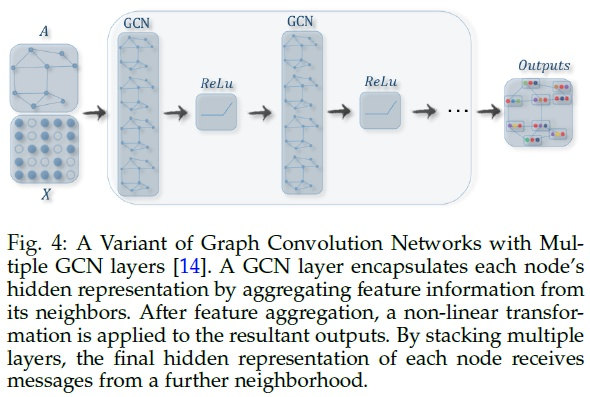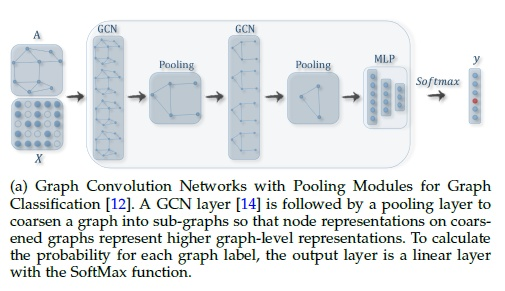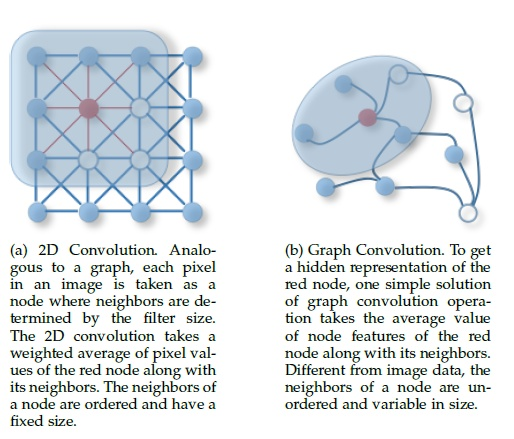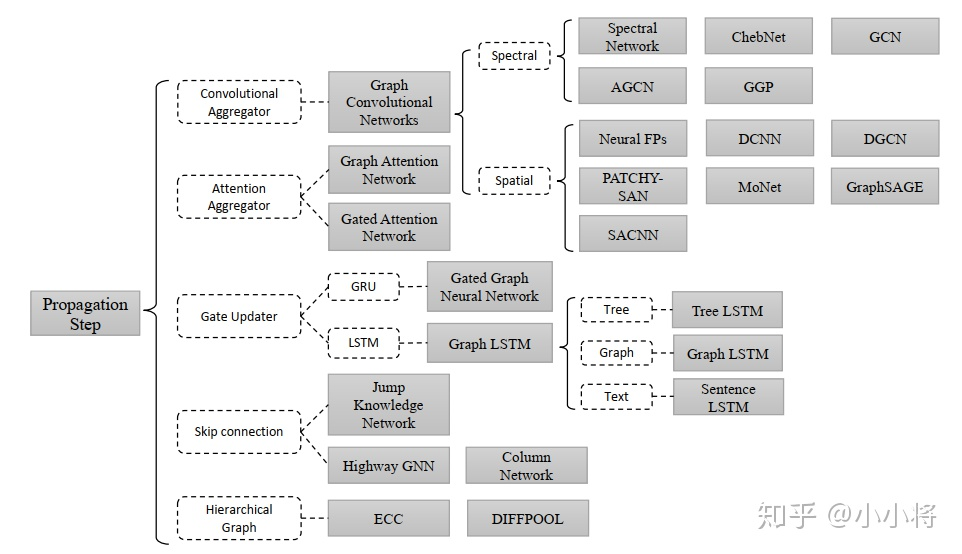GNN Visualization
Introduction
There are some traditional method for visualizing GNN and explanation system for it. But there is no specific visualization method for GNN. Based on the difference between GNN and other neural networks, there should be a specific method for GNN visualization.
Background
Machine learning task for graphs:
node classification
link prediction
graph classification
Here is a classical GNN model for node classification.

Here is a classical GNN model for graph classification.

Aims of visualization is to better understand how GNN helps to solve the tasks. So when doing visualization, they need to be dealed with separately.
Graph Neural Network

Similar to Convolutional Neural Network, GNN also learns the weights for every features and sum them. The difference is that GNN aggregate from local neighbor rather than two-dimensional matrix. For multi-layer GNN, it can gradually learn more abstract features with the increasement of layers. It can be represented as:

where W is the learning weight, A is adjacency matrix, H is hidden layer embeddings and σ is the activation function.
We can also transform the learning processes into three parts: Transform, Aggregate and Update. All the variants of GNN consist of these three parts.
Transform:
Transform the current node features to new features, usually using weights (HW)
Aggregate:
Aggregate information from neighborhood and calculates an aggregated message via an aggregation method
Update:
Update the representation of l layer from l-1 layer non-linearly.
Here is a figure for GNN family.

Classical Neural Network Visualization Method
From the perspective of interpretability:
simple proxy models of full neural networks
linear models or sets of rules
model-agnostic way
identify important aspects of the computation
feature gradients
backpropagation of neurons’ contributions
counterfactual reasoning
attention mechanisms like GAT learned
edge attention values can indicate important graph structure, the values are the same for predictions across all nodes.
From the perspective of concrete technique:
Representation plotting (direct plotting, t-SNE)
Saliency map
Variance and average
Decomposition
Attention
... ...
Graph Neural Network Visualization
1) saliency map
Here we first uses saliency map to visualize GNN. We uses
Datasets
Cora
The Cora dataset consists of 2708 scientific publications classified into one of seven classes. The citation network consists of 5429 links. Each publication in the dataset is described by a 0/1-valued word vector indicating the absence/presence of the corresponding word from the dictionary. The dictionary consists of 1433 unique words.
For visualization task, it will be an important problem to visualize the 1433 dimensions. So the dimension selection will be a key point.
https://relational.fit.cvut.cz/dataset/CORA
Reference
Paper Reference:
https://cs.stanford.edu/people/jure/pubs/gnnexplainer-neurips19.pdf (GNNExplainer)
https://arxiv.org/pdf/1812.00279.pdf (knowledge graph)
http://openaccess.thecvf.com/content_CVPR_2019/papers/Pope_Explainability_Methods_for_Graph_Convolutional_Neural_Networks_CVPR_2019_paper.pdf ( computer vision)
https://arxiv.org/pdf/1807.03404.pdf (Materials Science)
https://graphreason.github.io/papers/25.pdf (2019ICML workshop)
https://arxiv.org/abs/1903.03768(unpublished)
https://arxiv.org/pdf/1710.10903.pdf (GAT)
Code Reference:
https://github.com/rusty1s/pytorch_geometric
https://github.com/baldassarreFe/graph-network-explainability
https://github.com/RexYing/gnn-model-explainer
Blog Reference:




【推荐】编程新体验,更懂你的AI,立即体验豆包MarsCode编程助手
【推荐】凌霞软件回馈社区,博客园 & 1Panel & Halo 联合会员上线
【推荐】抖音旗下AI助手豆包,你的智能百科全书,全免费不限次数
【推荐】博客园社区专享云产品让利特惠,阿里云新客6.5折上折
【推荐】轻量又高性能的 SSH 工具 IShell:AI 加持,快人一步